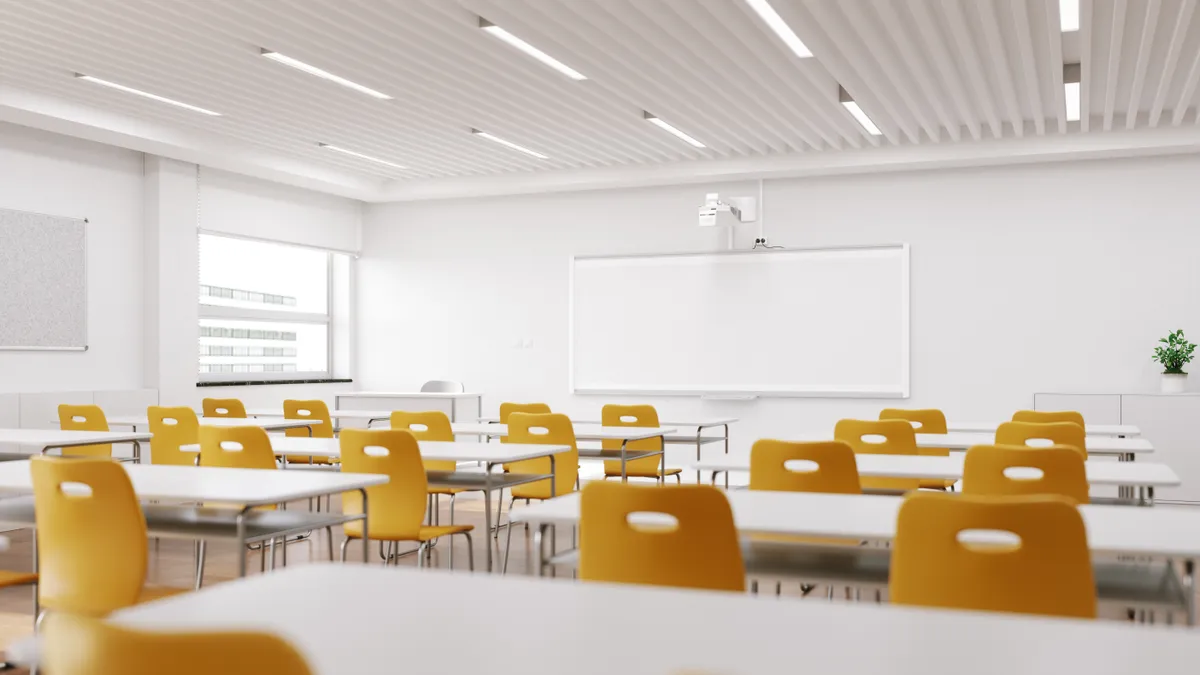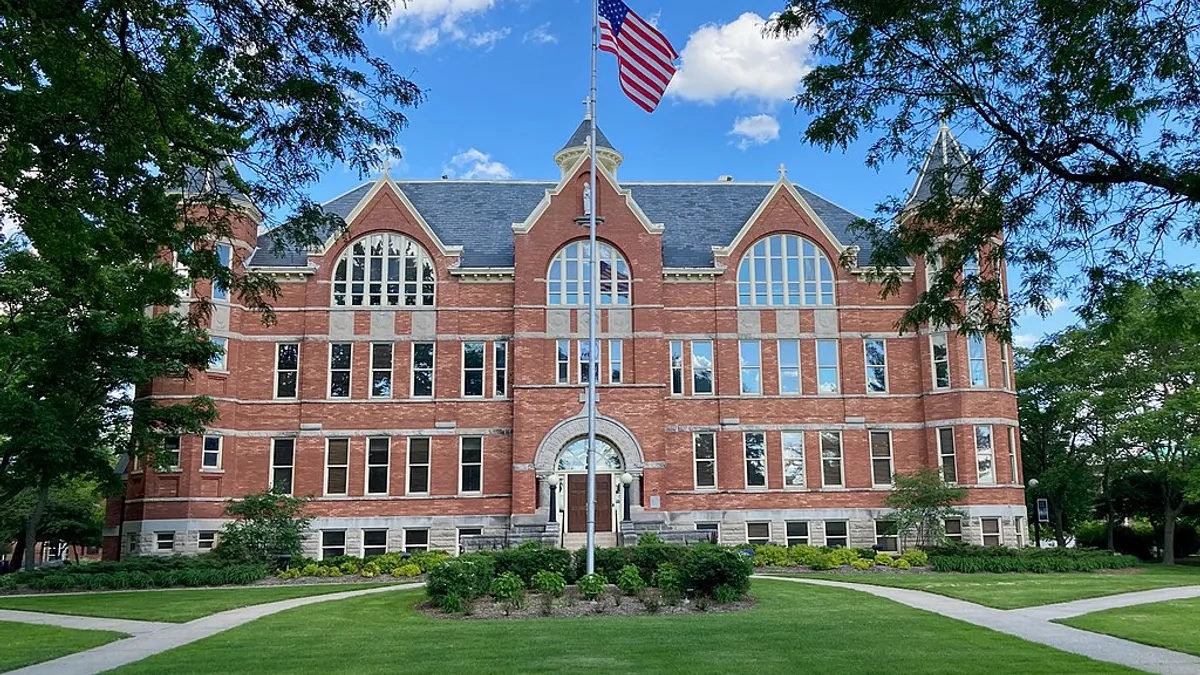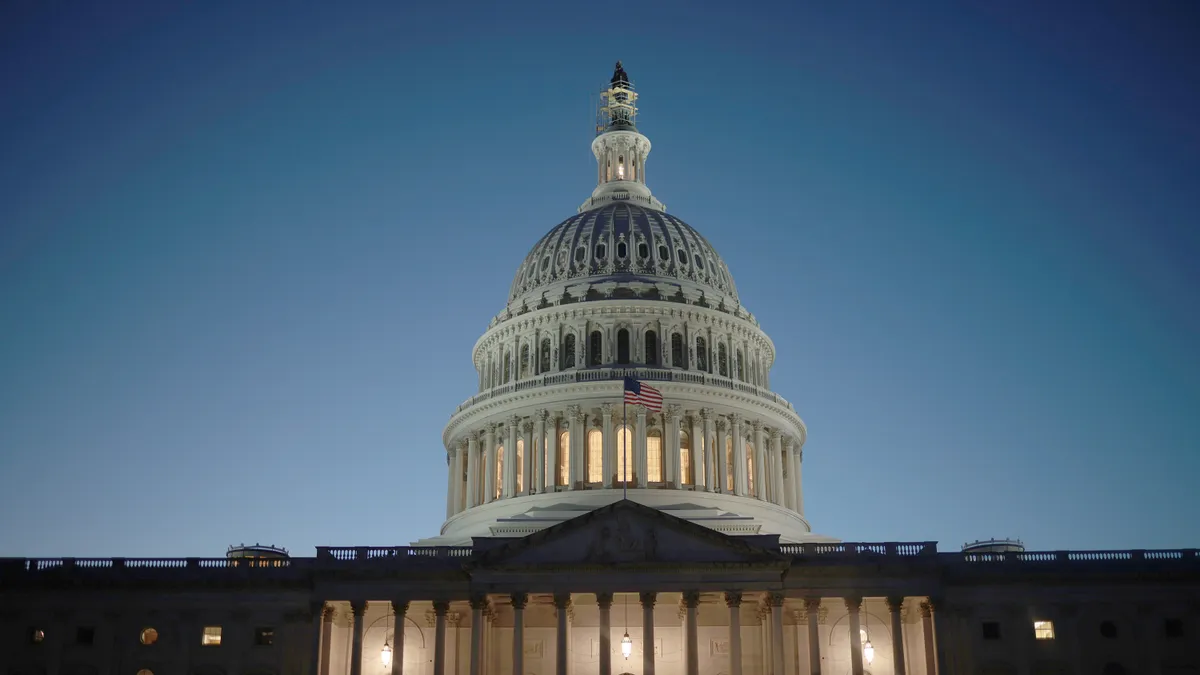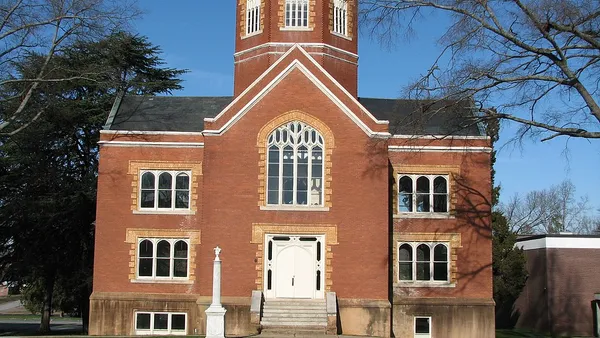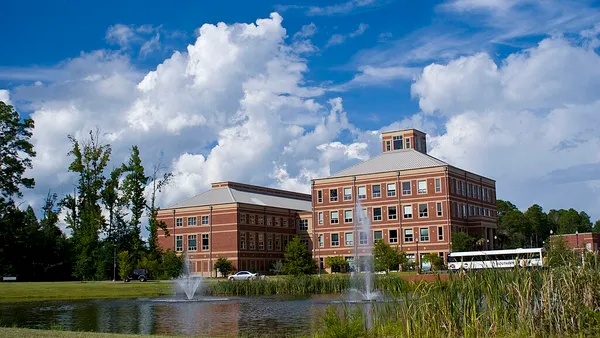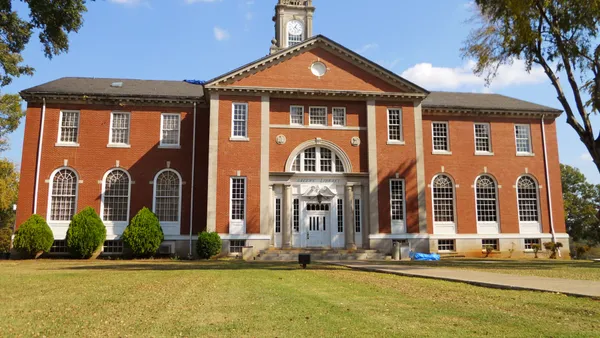Dive Brief:
- Fitch Ratings issued another gloomy outlook for the higher education sector, with analysts expecting “deteriorating” financial conditions for many institutions in 2025.
- In a Tuesday report, the credit rating agency said “uneven enrollment dynamics, rising competitive pressures and continuing margin pressures will challenge credit factors across the sector.” Added to those challenges are flat public funding, elevated wage costs, constraints on revenues and rising capital spending needs.
- Those challenges “will continue to chip away at more vulnerable higher education institutions in 2025,” and that’s even if inflation eases and interest rates come down, Fitch Senior Director Emily Wadhwani said in the report.
Dive Insight:
Colleges face largely the same financial difficulties in the year ahead that they have wrestled with in recent years.
Enrollment troubles and high costs are central challenges for many, especially among smaller private institutions and regional public universities. As Fitch noted, “the freshman enrollment pipeline has declined particularly for four-year schools.”
That comes even as undergraduate enrollment stabilized somewhat after the coronavirus pandemic. Analysts also pointed to the rise in dual enrollment, which has boosted community college enrollment.
Undergraduate enrollment for fall 2024 increased 3% over last year, but first-year student enrollment dipped 5%, according to preliminary October data from the National Student Clearinghouse Research Center. Undergraduate growth at four-year institutions performed below the national average.
The ratings agency attributed the first-year enrollment woes to the botched rollout of the new Free Application for Federal Student Aid form, as well as challenging demographics and declining consumer spending.
But those aren’t the only enrollment challenges.
Despite overall gains in international enrollment, Fitch noted headcounts of new foreign students in the U.S. have been flat over the previous two years. Analysts said “that student group remains highly susceptible to unfavorable shifts in both geopolitical sentiment and policy.”
The incoming Trump administration could bring such shifts. Some colleges have already urged international students to return to the U.S. from holiday break before President-elect Donald Trump’s Jan. 20 inauguration.
Trump’s first term likely informed those warnings.In 2016, he issued an executive order days after taking office that caused travel disruptions for visa-holders from several Muslim-majority countries. On the campaign trail, Trump vowed to implement similar travel restrictions during his second term.
All those enrollment risks translate into revenue constraints for higher ed institutions. As colleges compete for limited prospective students, tuition discounts are continuing to rise, according to Fitch. The agency estimates “mild” net tuition growth of 2% to 4% in the 2024-25 academic year for most of its rated colleges.
The limits to revenue growth exacerbate the pain of high costs. Higher ed inflation has tempered, after soaring amid the pandemic, but costs still remain much higher than prior to the advent of COVID-19.
What’s more, colleges have held off on spending during recent years of heavy financial weather. That’s led to pent up — and, for many colleges, necessary — investments in people, infrastructure and initiatives. Moody’s, for example, estimated the institutions it covers have about $950 billion in deferred maintenance needs.
Fitch analysts sounded a similar note in their report this week.
“For most schools capital spending has remained well below pre-pandemic levels through this past year, as evidenced by increasing levels of deferred maintenance and the highest average age of plant in years for many Fitch-rated institutions,” analysts noted.
Editor’s note: The National Student Clearinghouse Research Center announced Jan. 13 that a methodology error led to incorrect figures for first-year students in its preliminary enrollment data for fall 2024. Further research from the clearinghouse shows that first-year enrollment increased.



